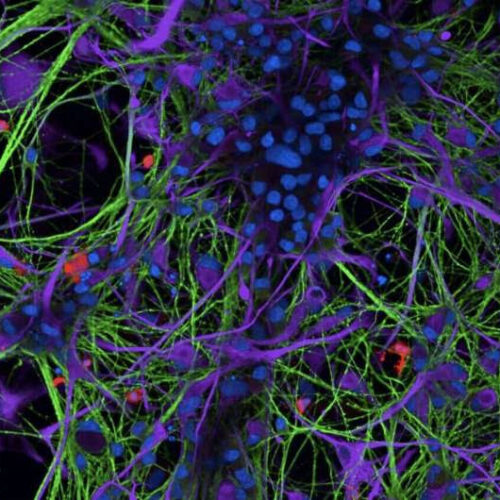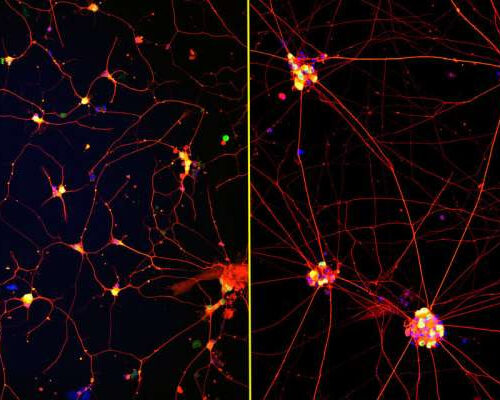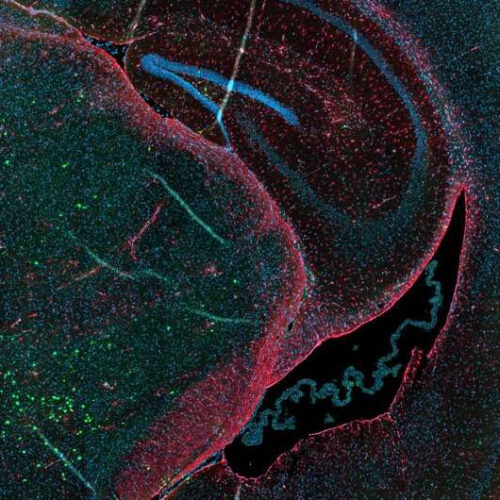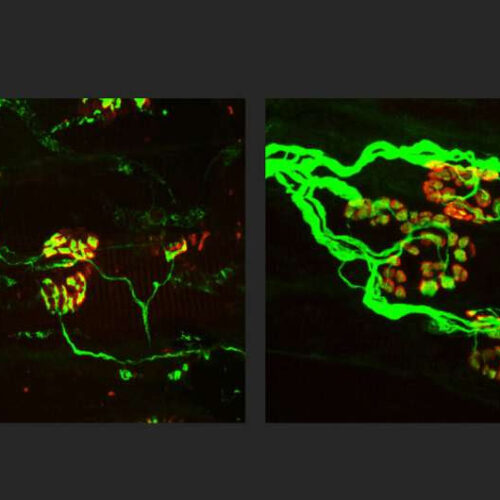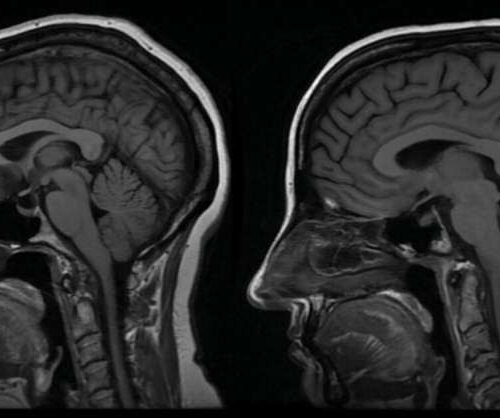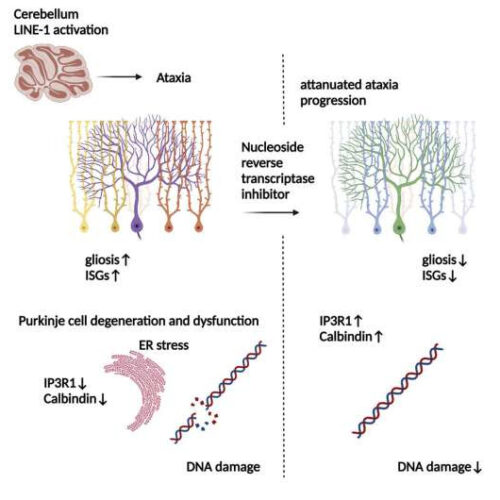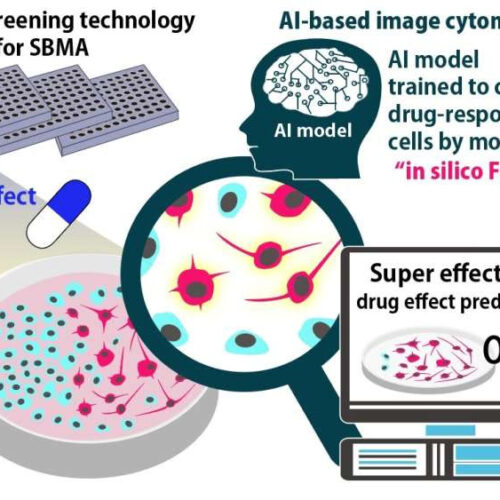TUFTS UNIVERSITY, HEALTH SCIENCES CAMPUS The p97 protein is one of your body’s best garbage disposers. It floats around in your cells looking for signals that a protein is past its shelf life and needs to be trashed. Mutations in this protein have been linked to neurodegenerative diseases, such as ALS and dementia, but p97’s...
Tag: <span>Neurodegenerative disease</span>
Study shows how iron dysregulation might contribute to neurodegenerative diseases
by Ingrid Fadelli, Medical Xpress Immunofluorescent image of human ipsc-derived tri-culture, containing microglia (red), neurons (green), and astrocytes (purple). Nuclei are stained blue. These cultures were used to unravel the role of iron overload and ferroptosis in microglia in neurodegenerative disease. Credit: Ryan et al Past neuroscience research consistently found a link between deviations from the “normal”...
Mature ‘lab grown’ neurons hold promise for neurodegenerative disease
by Northwestern University Fluorescent images of human neurons (stained with red, green and blue) growing on coatings with fast-moving molecules (left) or conventional laminin (right) for 72 hours. Neurons attached and spread homogenously on the highly mobile coating but remained clumped together on the laminin coating. Credit: Northwestern University Northwestern University-led researchers have created the first highly...
Protein mutation that causes Parkinson’s may prevent another neurodegenerative disease
by University of Massachusetts Amherst Mice expressing E46K alpha-synuclein developed neuropathological inclusions in the brain (shown in green) following injection with recombinant E46K fibrils. Red staining shows astrocytes, blue is cell nuclei. Credit: Woerman Lab, UMass Amherst A University of Massachusetts Amherst scientist has discovered that a mutation in the misfolding protein that causes Parkinson’s...
New strategy shows potential to block nerve loss in neurodegenerative diseases
by Julia Evangelou Strait, Washington University School of Medicine Researchers at Washington University School of Medicine in St. Louis are working toward a treatment for neurodegenerative diseases that targets SARM1, a key molecule in the death of axons, the wiring of the nervous system. Shown, the axons (green) are thinner in a rodent model of...
‘Leaky’ activity of mutated enzyme underlies neurodegenerative disease
by University of California – San Diego Patients with spinocerebellar ataxia type 14 display cerebellar atrophy (right, green arrow) compared to age-matched healthy controls (left). Credit: UC San Diego Health Sciences Spinocerebellar ataxias are a group of neurodegenerative diseases characterized by the degeneration of Purkinje cells, a major class of neurons in the cerebellum. The...
Machine-learning method shows neurodegenerative disease can progress in newly identified patterns
by Lauren Hinkel, Massachusetts Institute of Technology Credit: Pixabay/CC0 Public Domain Neurodegenerative diseases—like amyotrophic lateral sclerosis (ALS, or Lou Gehrig’s disease), Alzheimer’s, and Parkinson’s—are complicated, chronic ailments that can present with a variety of symptoms, worsen at different rates, and have many underlying genetic and environmental causes, some of which are unknown. ALS, in particular,...
‘Jumping’ genes yield new clues to origins of neurodegenerative disease
by Bill Hathaway, Yale University Graphical abstract. Credit: Neuron (2022). DOI: 10.1016/j.neuron.2022.08.011 Massive, repetitive stretches of DNA in the human genome may harbor hints about the onset of a rare, inherited neurodegenerative disorder called ataxia-telangiectasia as well as other related diseases, a new Yale School of Medicine study finds. The findings also point to possible directions for...
AI analyzes neuron changes to detect whether drugs are effective for neurodegenerative disease patients
by Nagoya University In silico FOCUS. Credit: Ryuji Kato A research group from Nagoya University in Japan has developed artificial intelligence to analyze cell images that uses machine learning to predict the therapeutic effect of drugs. Called in silico FOCUS, this new technology may aid in the discovery of therapeutic agents for neurodegenerative disorders such as...
Electronic implant reactivates spinal-cord nerves of a patient with neurodegenerative disease
by Ecole Polytechnique Federale de Lausanne Patient with multiple system atrophy-parkinsonian type (MSA-P) was able to stand and walk after one year of being bedridden. Credit: EPFL / Jimmy Ravier A patient suffering from a debilitating neurodegenerative disease was able to get up and walk again after being bedridden for over a year, thanks to...

